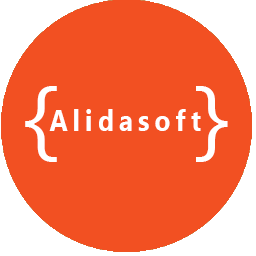AWS Technical Essentials
A Comprehensive Guide for Prospective Cloud Computing Enthusiasts
Introduction
Embarking on the journey of AWS (Amazon Web Services) can be both exhilarating and overwhelming, especially for those new to the world of cloud computing. This guide aims to demystify the essentials of AWS, providing prospective cloud computing students with a solid foundation to kickstart their learning journey.
Understanding AWS: A Bird’s Eye View
What is AWS?
Amazon Web Services (AWS) is a comprehensive cloud computing platform provided by Amazon. It offers a wide array of services, including computing power, storage options, and networking capabilities. AWS is renowned for its scalability, reliability, and cost-effectiveness.
Key AWS Services
- EC2 (Elastic Compute Cloud): Virtual servers in the cloud, allowing for scalable compute capacity.
- S3 (Simple Storage Service): Object storage for the web, ideal for storing and retrieving any amount of data.
- RDS (Relational Database Service): Managed relational database service, supporting multiple database engines.
Navigating the AWS Console
AWS Management Console
The AWS Management Console is your gateway to the cloud. Understanding its layout and key features is crucial for effective navigation.
- Dashboard: An overview of your AWS resources.
- Services: A dropdown menu offering access to various AWS services.
- Find Services: A quick search bar for easy access to specific services.
AWS Identity and Access Management (IAM)
IAM Basics
IAM is fundamental for controlling access to AWS services and resources securely. Key concepts include:
- Users: Individuals with unique credentials for accessing the AWS Management Console.
- Groups: Collections of users with the same permissions.
- Roles: IAM entities with policies that determine permissions.
Networking in AWS
Virtual Private Cloud (VPC)
Understanding VPC is crucial for creating a logically isolated section of the AWS Cloud. Key components include:
- Subnets: Segments of IP addresses in a VPC.
- Route Tables: Rules for traffic leaving the subnet.
- Internet Gateways: Connecting a VPC to the internet.
Storage Options
S3 and Glacier
AWS offers versatile storage solutions. S3 is ideal for frequently accessed data, while Glacier is a cost-effective choice for archival data.
- S3 Buckets: Containers for storing files.
- Glacier Vaults: Archives for long-term data storage.
Security Best Practices
Securing Your AWS Environment
Security is a top priority in AWS. Implementing best practices ensures a robust and protected environment.
- Encryption: Secure data with encryption, both in transit and at rest.
- Multi-Factor Authentication (MFA): Add an extra layer of protection to user accounts.
Cost Management
Understanding AWS Pricing
While AWS offers a flexible and pay-as-you-go pricing model, understanding the cost structure is vital.
- AWS Pricing Calculator: Estimate your monthly bill based on usage.
- Free Tier: Leverage AWS services within certain usage limits at no cost.
Conclusion
Embarking on the AWS journey requires a solid grasp of the technical essentials. This guide has provided a comprehensive overview of key AWS services, navigation through the AWS console, IAM, networking, storage options, security best practices, and cost management.
Summary
- Introduction to AWS: Overview of AWS as a leading cloud computing platform.
- Key AWS Services: Highlighting EC2, S3, and RDS.
- Navigating the AWS Console: Understanding the layout and features.
- IAM Basics: Managing user access and permissions.
- Networking in AWS: Overview of VPC and essential components.
- Storage Options: Exploring S3 and Glacier.
- Security Best Practices: Implementing encryption and MFA.
- Cost Management: Understanding AWS pricing and leveraging the Free Tier.
Embark on your AWS journey with confidence, armed with the technical essentials needed for success in cloud computing.

